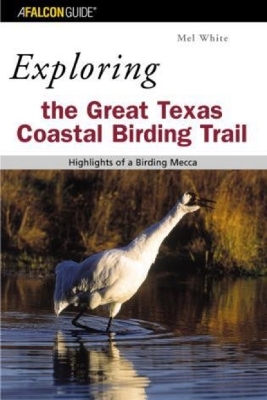Exploring
1 total work
Birding is booming. The hobby (or, in many cases, passion, or even addiction) has been growing steadily for years, according to studies conducted by both governmental and private organizations. An amazing number of people -- more than 70 million, by one 2001 survey of recreation preferences -- say they participate in birdwatching.
Undoubtedly, many of these people simply put feeders in their back yards and enjoy watching the hummingbirds, chickadees, and goldfinches that show up. But just as certainly, more and more birders are venturing out to discover the fun of seeing new birds in new places, whether it's a drive through a national wildlife refuge or a guided walk at a nature preserve.
Once someone has discovered the joys and challenges of birding, it doesn't take long to learn that there are places in the United States that experienced birders visit as surely as geese fly south in the fall. These spots are to birders what the Rockies are to skiers, or Pebble Beach is to golfers. Such a place is the region encompassing the Texas Gulf Coast and the lower Rio Grande Valley -- now the home of the Great Texas Coastal Birding Trail, a state-designated driving route connecting more than 300 birdwatching sites from the Louisiana state line to the Mexican border. Brown highway signs, marked with the profile of a Black Skimmer, point the way to these bird-rich destinations.
Exploring the Great Texas Coastal Birding Trail examines highlights of this popular route: locations ranging from national wildlife refuges with tens of thousands of acres to small city parks to stretches of isolated road passing through birdy habitat. In this guide, expert birder/writer Mel White profiles more than 80 of the best sites along the trail, chosen for diversity of habitat, species, and seasonality; productivity; and accessibility. Site listings give general (and often specific) directions, contact information (including websites when available), advice about when and how to bird the location, and a listing of some of the notable species that might be found. Also featured are nearby museums, nature centers, festivals, and accommodations of particular interest to the visiting birder.
Undoubtedly, many of these people simply put feeders in their back yards and enjoy watching the hummingbirds, chickadees, and goldfinches that show up. But just as certainly, more and more birders are venturing out to discover the fun of seeing new birds in new places, whether it's a drive through a national wildlife refuge or a guided walk at a nature preserve.
Once someone has discovered the joys and challenges of birding, it doesn't take long to learn that there are places in the United States that experienced birders visit as surely as geese fly south in the fall. These spots are to birders what the Rockies are to skiers, or Pebble Beach is to golfers. Such a place is the region encompassing the Texas Gulf Coast and the lower Rio Grande Valley -- now the home of the Great Texas Coastal Birding Trail, a state-designated driving route connecting more than 300 birdwatching sites from the Louisiana state line to the Mexican border. Brown highway signs, marked with the profile of a Black Skimmer, point the way to these bird-rich destinations.
Exploring the Great Texas Coastal Birding Trail examines highlights of this popular route: locations ranging from national wildlife refuges with tens of thousands of acres to small city parks to stretches of isolated road passing through birdy habitat. In this guide, expert birder/writer Mel White profiles more than 80 of the best sites along the trail, chosen for diversity of habitat, species, and seasonality; productivity; and accessibility. Site listings give general (and often specific) directions, contact information (including websites when available), advice about when and how to bird the location, and a listing of some of the notable species that might be found. Also featured are nearby museums, nature centers, festivals, and accommodations of particular interest to the visiting birder.
